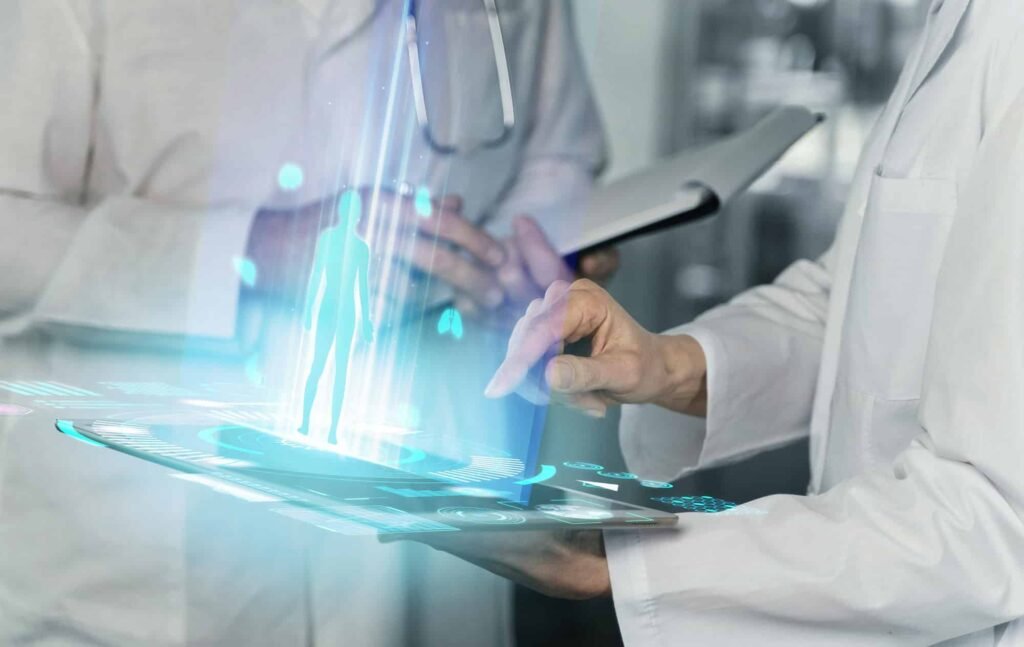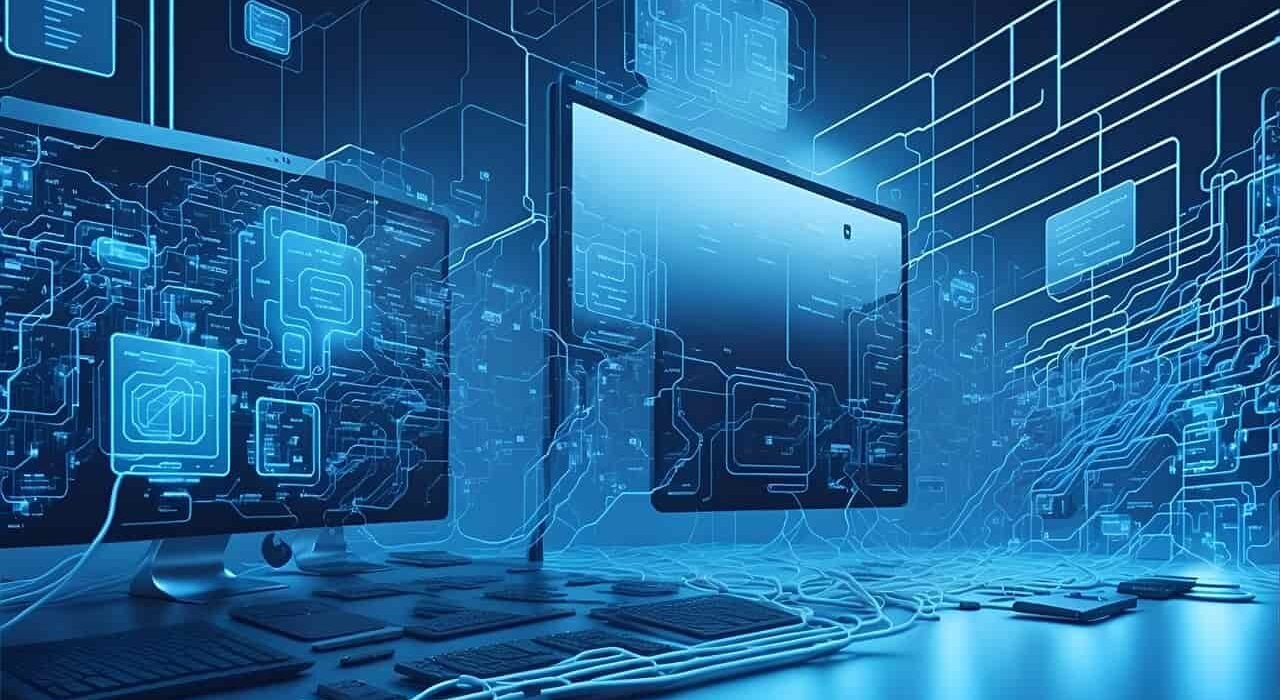Introduction
In the rapidly changing environment of the twenty-first century, the importance of technology is a strong backend to human progress and development of societies. Technology has been around since the time we wake up to the time we sleep and covers every area of our lives-from work, communication, learning to even receiving health care. With this, technological solutions have been adopted in everyday activities, making complex tasks easier and exposing a lot of possibilities that are otherwise too impossible.
The Basic Fundamentals of Technology:
Technology basically means the practical application of knowledge as a result of humanity’s capacity to solve problems in order to improve living conditions. Importance of technology has always turned significant points in history in their civilizations-from fire discovery and wheel invention to computing systems and modern machines like artificial intelligence.
Today, technology has occupied such a vital part of our lives that it is almost impossible to imagine a world without it. It is, as you might say, behind the hand that makes possible the drive of economic growth, scientific research, and social improvement. Most advanced countries generally enjoy a better living standard and health and educational systems because of their advanced technological capabilities.
Convenience in life has become increasingly important, but not so important as to reach into the destinies of many people. It is where importance on a more global scale comes in, like on climate change, food security, and disease management, among many others. Applying technology can create solutions for a sustainable future.
Importance of Technology in HealthCare
Importance of Technology advancement has transformed the field of healthcare. New medical technology has provided exponential increases in diagnosis accuracy, treatment efficacy, and quality of care.
Diagnostic Technology
Novel imaging technologies such as MRIs, CT scans, and ultrasounds show in-depth views of the body structures, allowing clinicians to identify conditions that may go unnoticed. Physicians now have to utilize procedures at all shown pathological changes without needing exploratory surgery, ensuring the procedures are non-invasive to protect the patient and reduce recovery time. New and efficient laboratory diagnostic equipment compared to the past allows tests to be delivered both faster and accurately. Automated analyzers of lab diagnostics can process hundreds of samples, sometimes simultaneously, providing valuable information to medical providers to make timely medical decisions.
Treatment Technology
Ultimately adjusting surgical techniques have been robotic assistance systems that improve precision. With help of technology tools, minimally invasive procedures reduce scarring, lower pain, and length of hospital stay. Computational models that mimic how hypothetical drugs interact with human cells have sped up drug development and greatly cut the time and expense of launching new therapies to market.
Patient Care Technology
By allowing for the remote observation of people’s vital signs, remote monitor devices ensure early intervention can be carried out when worrying patterns first start to emerge. This is very useful for long term disorders including diabetes, cardiovascular disease, and respiratory problems.
Authorized healthcare practitioners may access important patient data from anywhere thanks to the streamline of patient data management via Electronic Health Records (EHRs). This improved care coordination and minimized the chances of medical errors due to incomplete information.
Telemedicine systems have helped deliver medical treatment to a neglected population in distant areas by bridging physical distance gaps. In times of public health crises, these mechanisms have been essential for providing continuous treatment while reducing contact risks.
10 Importance of Technology in Education
The importance of technology in education is evident, as it has transformed learning by making it more interactive, accessible, and personalized. Here are ten crucial ways technology has revolutionized education
1. Interactive Learning: Students’ interest is caught and learning becomes more fun and efficient from interactive learning tools, educational games, and media contents. Diagrams and films help visual students; podcasts and audio descriptions are available to auditory learners.
2. Access to Information: The internet has democratized access to information, permitting students from many different backgrounds to access excellent educational materials. Open educational materials, online classes, and digital libraries all help to remove learning obstacles.
3. Personalized Learning: Adaptive learning systems can recognize unique student strengths and weaknesses, therefore tailoring content difficulty and area of concentration. This guarantees every pupil gets customized guidance.
4. Collaboration Opportunities: Digital technologies let students from any physical distance collaborate—whether online, asynchronously. Shared documents, videoconferencing, and discussion boards enable group projects and peer learning.
5. Immediate Feedback: Educational software can provide instant assessment of student work, highlighting areas for improvement without the delay of manual grading. If this happens, replier achievements: Quick appraisal of student output shows where improvement is needed without the delay of physical grading. Students can quickly straighten out misperceptions when they learn at a faster pace.
6. Skill Development: Technology in education helps students acquire digital literacy, analytical thinking, and problem solving abilities vital for the contemporary labor force. Online research projects, coding courses, and digital design classes equip students for careers based on technology.
7. Inclusive Learning Environments: Assistive technologies make education accessible to students with disabilities. Screen readers, speech-to-text software, and customizable interfaces remove barriers to learning for diverse student populations.
8. Administrative Efficiency: School management systems streamline attendance tracking, grade recording, and communication with parents. This allows educators to spend more time teaching and less time on paperwork.
9. Flexibility in Learning: Online and hybrid learning systems provide various schedules and learning styles. With internet connection everywhere, students can review contents at their own speed and have access to lessons from any location.
10. Global Exposure: Virtual field trips, expert guest speakers through video conferencing, and instant connections with classrooms all over the world help students to broaden their knowledge beyond geographical boundaries.
Importance of Technology in Medical
Essentially, the Importance of technology in medical includes so many devices, procedures, and systems for the prevention, diagnosis, monitoring, and treatment of diseases and impairments. One cannot even begin to say that medical technology is very important in improving life and health.

Preventive Care Technologies
Wearable health monitors give real-time information about the vital signs and activity levels of individuals leading to proactive optimization of health. Devices also detect any abnormal heart rhythms or blood glucose activities of the user and monitor the activity pattern of the user during sleep then starts early intervention before serious illness occurs.
Genetic testing technologies have revolutionized preventive medicine through finding out inherited risks of diseases. This information allows people and medical professionals to do targeted prevention at the very earliest lifestyle changes.
Life-Saving Medical Devices
Ventilators and life support machines take care of all essential functions that the body cannot perform. They were extremely important during COVID-19 in the care of critically ill patients.
Implantable cardiac devices including defibrillators and pacemakers continuously check the heart rhythm and provide electric pulses should dangerous irregularities be found, hence stopping sudden cardiac death.
Several means of first aid response, including automated external defibrillators (AEDs) and sophisticated trauma management equipment, offer lifesaving care within the “golden hour” after an emergency and have significantly boosted survival rates.
Quality of Life Technologies
With sensors and motors, prosthetic legs can enable amputees to walk, run, and go around. This technology lets an amputee perform several daily tasks naturally with more accuracy and speed than would be possible with a limbless prosthesis.
Hearing aids and cochlear implants have restored hearing abilities to people with deafness, hence enabling them to interact and talk.
From spinal cord stimulation to drug delivery systems, modern pain management technologies have guaranteed that people with chronic painful conditions are free of drug dependency from the usage of addictive pain drugs.
The part of technology in corporate and economy
The importance of technology in business is evident, as it has transformed processes of innovation, customer service, marketing, and operations in the commercial sector
Functional Efficiency
Automation technologies simplify monotonous jobs, lower human mistakes, and let staff members concentrate on more valuable projects needing creativity and critical thought. Manufacturing robots, document processing systems, and inventory management software exemplify this transformation.
Cloud computing enables companies to utilize high computing power without major initial investment in hardware. The scalability makes it possible for small startups to rival established companies by only paying for the resources they consume.
Global Market Access
Geographical boundaries no longer pose an obstacle to even small businesses as e-commerce platforms have made doing business globally simple. Entrepreneurship has been made easier and allows scope for niche products to find a marketplace in a global economy.
Digital marketing technologies allow for better targeting of customers using demographics and online behavior. This enhances the effectiveness of marketing and minimizes expenditure on uninterested customers.
Making Decisions Based on Facts
Strategic decisions have become less intuitive because they are informed by patterns, trends, and insights generated by the analysis of vast data sets. Business intelligence tools reduce guesswork and deliver more predictable outcomes.
Customer Relationship Management (CRM) systems track interactions for supposed marketing needs, therefore, enabling businesses to understand the market better. This allows for personalization that would lead to loyalty, and repeat business.
Issues and Considerations
Despite its numerous benefits, technology implementation comes with challenges that must be carefully addressed:
Digital Divide: People’s access to technology is unequal due to the impact of social class, geographical position, and the available infrastructure. Closing this gap requires the time and effort of the government, businesses, and the nonprofit sector.
Concerns Relating to Privacy and Security: As technology gathers and processes greater amounts of individual data, safeguarding personal privacy as well as restricting unwarranted access to private information takes the fore. Stronger measures in protecting sensitive data and cybersecurity must always go in tandem with new technological improvements.
Lack of or Undeveloped Ethical Principles: The latest technologies such as artificial intelligence or genetic engineering come with new issues of autonomy, bias, and the scope of human action, thus posing significant ethical dilemmas. Appropriate measures must be undertaken in all technological undertakings and implementations to ensure that progress is made for the human good.
Conclusion
As emphasized previously, the importance of technology also plays a vital role in healthcare, business, education, and personal communication. Despite the existing problems, the issues with the implementation of technology are minor compared to the rewards. From healthcare to communication, technology has changed the way we work, live, and interact with others. One argument that can be further made is that the integration of various technologies does present a myriad of problems, however…
As we anticipate the future, I hope technological development will continue solving difficult problems and presenting new opportunities. Achieving it without disrespecting basic human values, making it non discriminatory, and sustainable will ensure that future generations will benefit from it. The year 2025 and the upcoming years will be defining moments for humanity, either accepting or disregarding human non equality.
With critical thinking guiding our actions, we are capable of constructing a more robust, equitable, and healthy world using technology.






